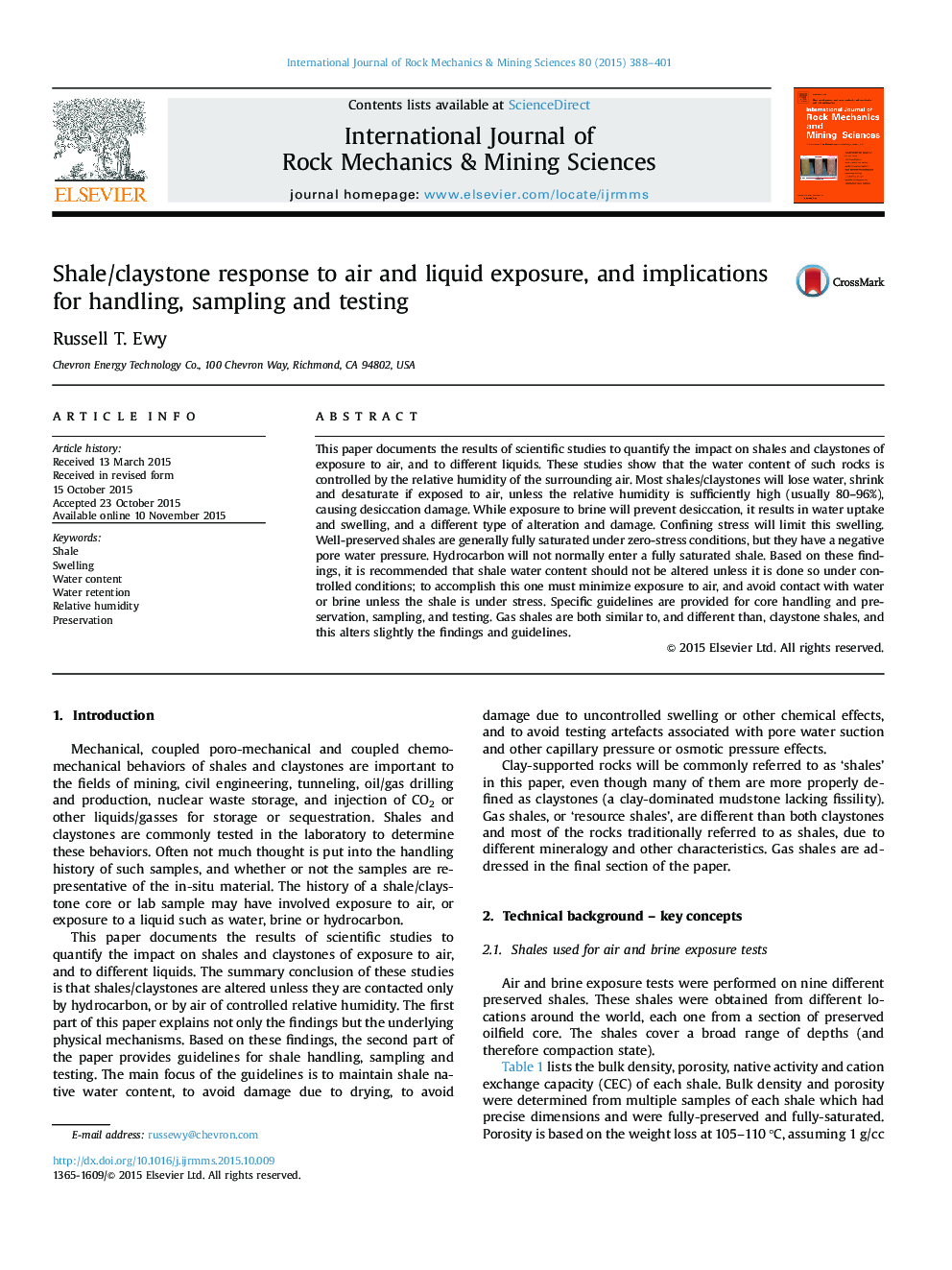| کد مقاله | کد نشریه | سال انتشار | مقاله انگلیسی | نسخه تمام متن |
|---|---|---|---|---|
| 809041 | 1468689 | 2015 | 14 صفحه PDF | دانلود رایگان |
• Water content and saturation of a shale are uniquely controlled by relative humidity.
• Shales easily dry out and shrink, and become damaged due to desiccation microcracks.
• Unstressed shales swell when contacted by brine, even high-salinity brine.
• Shale native water activity is lowered by the clay surfaces and by pore water tension.
• Preservation requires minimal air contact, and no brine contact.
This paper documents the results of scientific studies to quantify the impact on shales and claystones of exposure to air, and to different liquids. These studies show that the water content of such rocks is controlled by the relative humidity of the surrounding air. Most shales/claystones will lose water, shrink and desaturate if exposed to air, unless the relative humidity is sufficiently high (usually 80–96%), causing desiccation damage. While exposure to brine will prevent desiccation, it results in water uptake and swelling, and a different type of alteration and damage. Confining stress will limit this swelling. Well-preserved shales are generally fully saturated under zero-stress conditions, but they have a negative pore water pressure. Hydrocarbon will not normally enter a fully saturated shale. Based on these findings, it is recommended that shale water content should not be altered unless it is done so under controlled conditions; to accomplish this one must minimize exposure to air, and avoid contact with water or brine unless the shale is under stress. Specific guidelines are provided for core handling and preservation, sampling, and testing. Gas shales are both similar to, and different than, claystone shales, and this alters slightly the findings and guidelines.
Journal: International Journal of Rock Mechanics and Mining Sciences - Volume 80, December 2015, Pages 388–401
